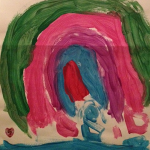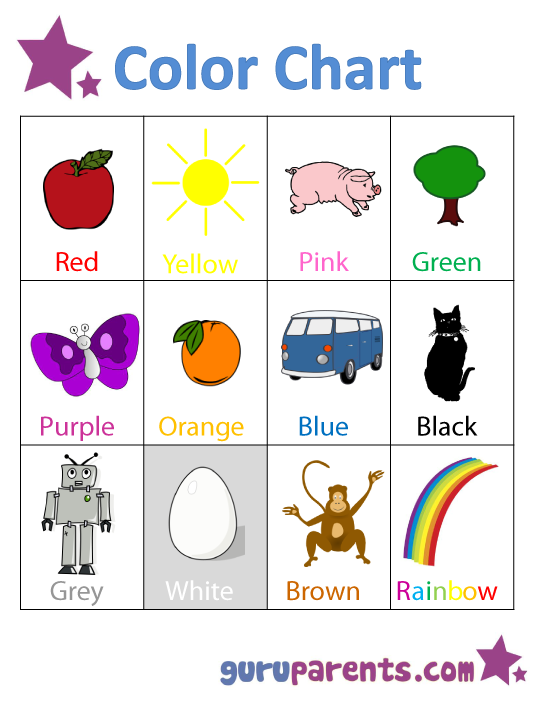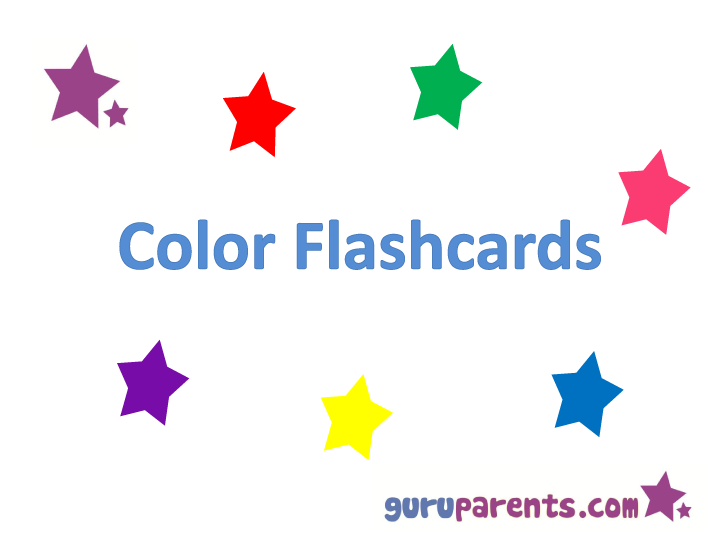 Teaching colors to children at a young age is an important part of language comprehension and development.
Teaching colors to children at a young age is an important part of language comprehension and development.
Colors are used so widely in everyday conversation and are among the English language’s most widely used adjectives.
It is for this reason that toddlers who can recognize and identify colors possess a considerable advantage when learning to communicate as they are able to express themselves more clearly and with more sophistication.
Where to start
Colors can be difficult for children to learn. There is a huge range of colors and it can be hard for even adults to tell the difference between some shades of pink and red.
Children tend to learn language in a particular way. They generally start with nouns and then begin to learn the associated adjective.
For example, your child is likely learn the word apple and then go on to say that the apple is red or juicy.
An ideal way to introduce a new concept to children is to use flashcards. Teaching colors with flashcards will familiarize your child with colors and the sight word for each color.
 Another way to introduce your child to colors is using a color chart. This is a great tool to use and a handy snapshot to have on display in your house. Our chart consists of 12 common colors – with a colored picture and the word for each color.
Another way to introduce your child to colors is using a color chart. This is a great tool to use and a handy snapshot to have on display in your house. Our chart consists of 12 common colors – with a colored picture and the word for each color.
Children love music, and a great way to teach new concepts is through song. If your child is a music lover, our Color Song is a fun song that will help your child learn to recognize colors.
Teaching Color Activities
There is a great range of activities that parents can use when teaching colors to children. Here are some basics games you can conduct with minimal resources:
- Conduct a scavenger hunt with your child. Search your house for items of a particular color and bring them back to the chart. Make sure you discuss the objects and color with your child and then go searching for objects of another color.
- You can use the fruits and vegetables in your fridge to play a game where your child names the fruit or vegetable and then names its color.
- Using color flashcards or cut out letters, provide your child with letters that they can match to the corresponding letter on the chart.
- Color Bingo – Create bingo tokens (colored pegs, pieces of paper, colored stickers – whatever you can find around the house!) and a ‘bingo chart’ for each player (we’ve created a color bingo template for you to use!). As you call out each color one at a time, if on their chart, players place that colored token on the square. The first one to fill their bingo chart calls ‘bingo’ and wins!
- Prepare a pile of pictures (predominantly one colour) taken from variety of sources like newspapers, magazines, advertising material or even draw up some pictures. Then sit with your child to match the pictures against the color on your chart.
- Play I Spy with your child and make it a rule that the color of the object is described as part of the game.
- Painting can be a fun activity for your child plus it is a great way to help to teach your child about colors.Until your child is ready to learn about primary and secondary colors, painting activities usually result in mixed and new colors – this is a good introduction to the more advanced concept of mixing colors.

